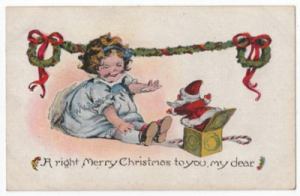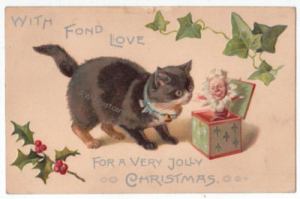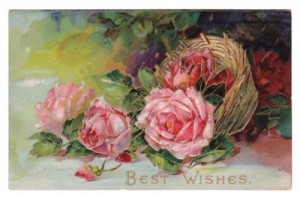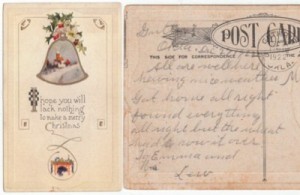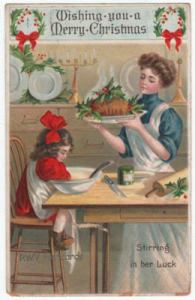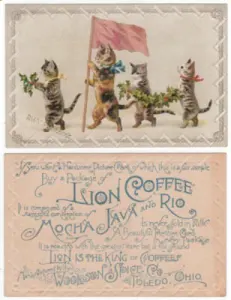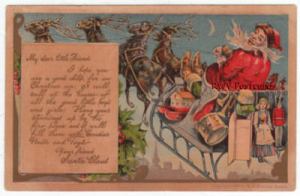The Advent calendar is used to count down the days of Advent (the period of preparation for the celebration of the nativity of Jesus) in anticipation of Christmas. Its use was a practice started by German Lutherans as early as the beginning of the 19th century.
As a German Lutheran, I would like to continue this practice. Starting December 1st I will be activating a link each day, thru December 25th, on the below advent calendar of Santa Claus. When you click on the link, you will be taken to an antique or vintage Christmas postcard I have listed in my store, Remember When Vintage Postcards. Purchase is nice, but not required. I only ask that you enjoy each Christmas postcard as it is revealed. (intro courtesy of my ‘2009 advent calendar blog post)
| Dec. 01 |
| Dec. 02 |
| Dec. 03 | Dec. 04 | |||||
| Dec. 05 | Dec. 06 | Dec. 07 | ||||
| Dec. 08 | Dec. 09 | |||||
| Dec. 10 | Dec. 11 | Dec. 12 | ||||
| Dec. 13 | Dec. 14 | Dec. 15 | ||||
| Dec. 16 | Dec. 17 | Dec. 18 |
| OOOOOO | OOOOO | OOOOO | OOOOO | OOOOOO |
| OOOOOO | OOOOO | OOOOO | OOOOO | OOOOOO |
| XXXXXXX | Dec. 19 | Dec. 20 | XXXXXXX | ||
| XXXXXXX | Dec. 21 | XXXXXXX | |||
| XXXXXXX | Dec. 22 | Dec. 23 | Dec. 24 | XXXXXXX | |
| XXXXXXX | XXXXXXX | Dec. 25 | XXXXXXX | XXXXXXX | |
| XXXXXXX | XXXXXXX | XXXXXXX | |||
| XXXXXXX | XXXXXXX | XXXXXXX | |||
| XXXXXXX |
Merry Christmas (and Happy Holidays) from Remember When Vintage Postcards!
If you want to return to this Advent Calendar to reveal the antique or vintage postcards behind the remaining days counting down to Christmas, please bookmark this blog post.
** Be sure to stop by the blog, The Best Hearts Are Crunchy, to view the many postcards shared on Postcard Friendship Friday.
I also wouldn’t mind your sharing this blog post with friends and family; especially those interested in antiques and collectibles (hint). If you repost/mention it on your blog or other social bookmarking platform, please remember to give me credit as all images/text are copyrighted.

